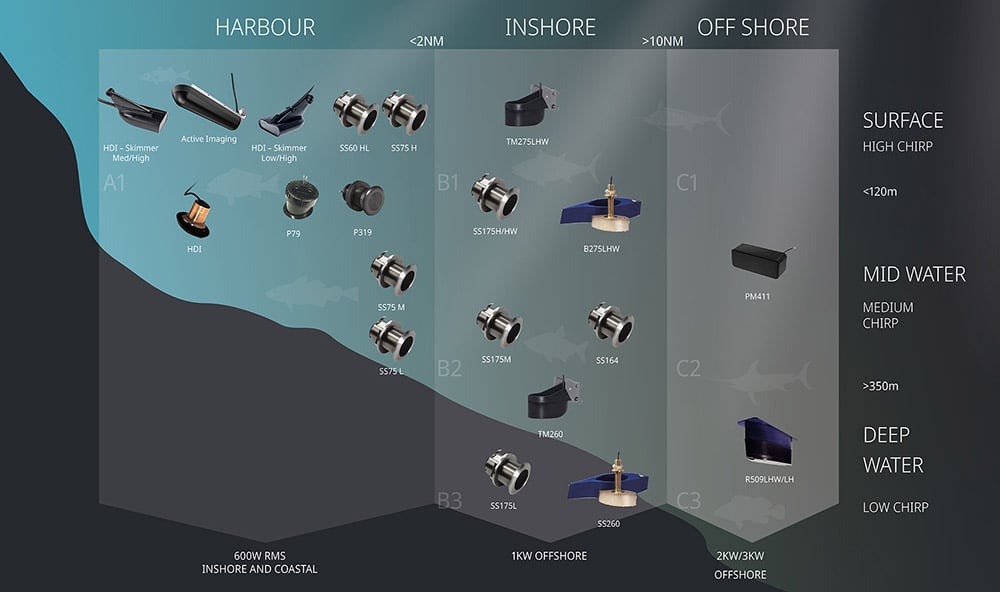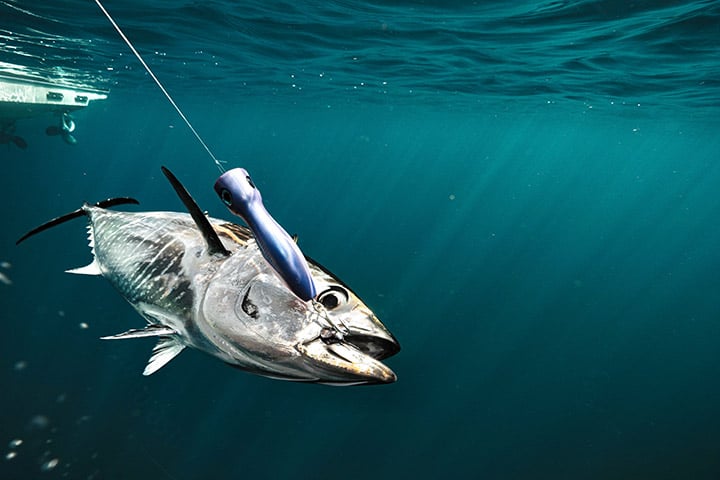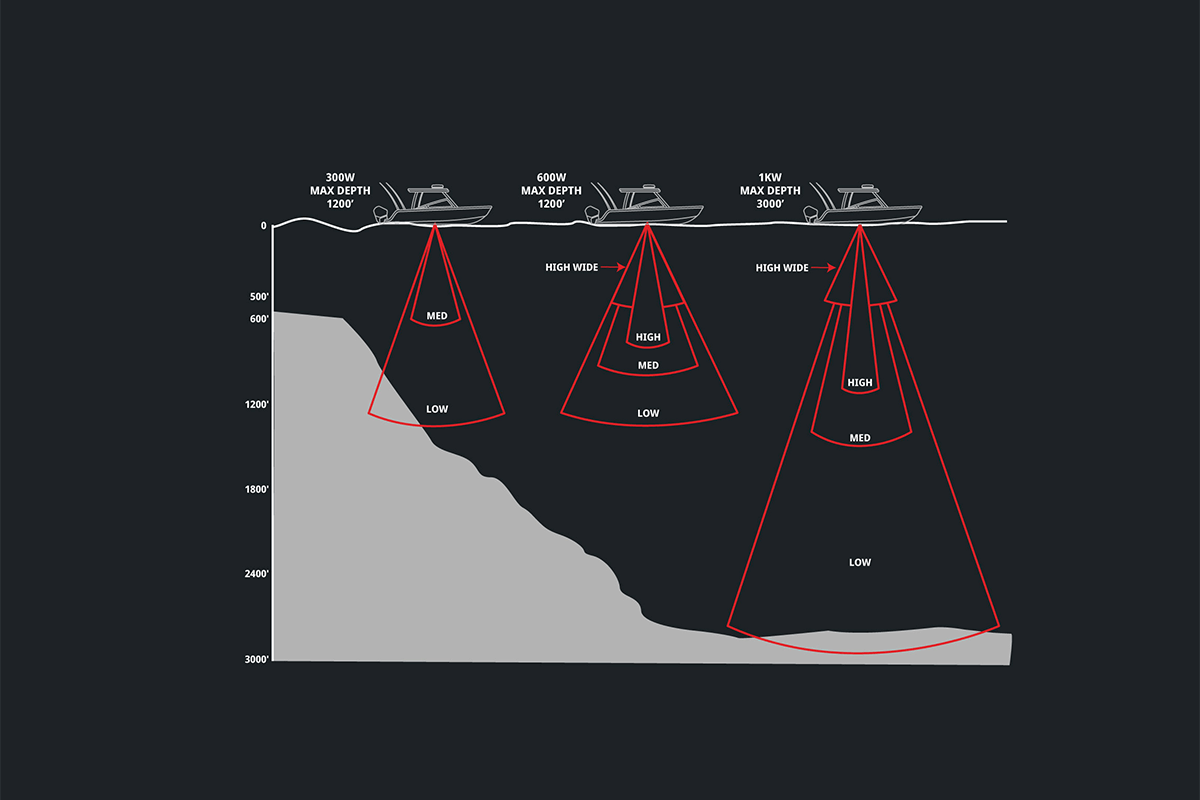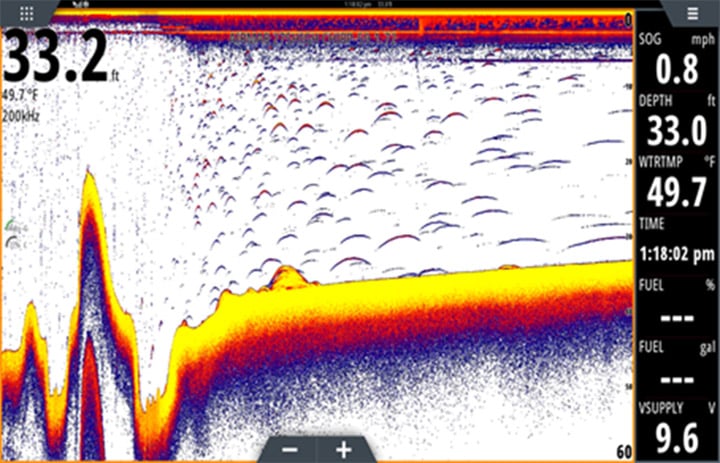
Sonar 101: How to Choose a Transducer
We get a lot of questions about how to select the right transducers for the best fishing scenarios. We know it’s a complicated world. With tons of exciting technology out there, with different options to suit different boats and different needs, it's difficult to unpack.

Here, we’re going to start by talking about two of the most important elements: power and frequency. Understand those two things, and you’re well on your way to understanding transducers.
In short, the power determines how deep your transducer can search, while the frequency determines the depth at which your transducer performs best. This is important because different varieties of fish live in different parts of the water column.
Understanding Power
Power is measured in Watts (W) and Kilowatts (kW). The more power you’ve got, the deeper your transducer can search.
Most entry level transducers output at 300W. This is effective for depth up to around 120ft (40m). That’s fine for most weekend warriors, and for those staying inshore. But if you’re planning to go a little deeper, you’re gonna’ need to step up the power. 600W is considered a nice middle ground. This will serve you up to around 1500ft (500m) while still being in the affordable bracket for a lot of boaters.
But what if you’re serious about offshore fishing? If you like planning bigger trips and going in search of fish that reside in deeper waters, it’s time to consider a 1kW transducer to take you past that 1500ft (500m) depth range.
We’re seeing even more powerful transducers come into the market, going to 2kW and 3kW – but these are typically installed on commercial deep water fishing boats. After all, it takes a lot of line pulling to come up from 6000ft (2000m).
So, the question of how much power you need really comes down to knowing how deep you want to go. And really, that’s a question of which fish you’re targeting. If you’re all about the search for Snapper and Yellowtail, you may not need to venture out all that far. But if you’ve got your heart set on landing a Tuna, Swordfish or a Marlin, then you’re going to have to find deeper water.
Fishing offshore isn’t just about getting a higher-powered transducer, though. If you’re fishing in deeper waters, you may benefit from a high-performance sonar box. A module like the S5100 can make it easier to fish in deep water, letting you monitor multiple depth ranges simultaneously – helping you locate schools of fish. Which leads us to frequency.
Know Your Frequencies
Different transducers ping at different frequencies – which are measured in kHz. This number determines the depth at which your transducer is going to perform best, giving you the clearest picture of what’s swimming down there.
200kHz is used for inshore fishing, up to depths of around 60ft (20m). This is sometimes referred to as High Frequency (H). This gives excellent resolution, allowing you to see super clear targets on your display – perfect for finding Snapper, Spanish Mackerel, or Mahi Mahi. A High-wide frequency (HW) covers the same depth, with a wider angle.
83kHz is a Medium (M) frequency range, capable of going a little deeper – closer to 120ft (40m). And 50kHz denotes a Low (L) frequency that’ll take you beyond 600ft (200m), meaning you can go looking for Yellowfin Tuna, Grouper and Sailfish.

Don’t be limited by your transducer, though! If you like to mix it up between fishing offshore and in coastal waters, look for a transducer that’s a capable of both high and low frequencies. Unsurprisingly, dual frequency transducers are more expensive than transducers they can do only one frequency.
By targeting multiple parts of the water column at the same time, dual frequency transducers are great for pelagic fishing – searching for bait at the top of the water column using high frequency, and targeting fish in deeper water using low frequency. To use a dual-channel transducer you need to have two sonar ports (like our NSS range), or one of our Sonar performance modules like the S3100.
Install It Right
The way your transducer performs isn’t just down to its power and frequency. You all need to get the installation right. The final depth performance is a combination of power and frequency, as well as the installation of the transducer.
With the advent of trim tabs, multiple engines and strait lines, placing your transducer in clean water can be a challenge. The most popular placement options are either thru-hull or transom mounts. The right decision, though, will always be dependent on your specific boat. While it is possible to change transducers down the track, it is a job that’s best done with the help of a Simrad® Certified Installer. The matrix below can help you figure out what you’ll need to get set up.
Beyond The Transducer
The transducer is a central part of your sportfishing arsenal – but it isn’t everything. Combining your transducer with the right gear across your boat is key to unlocking your full potential out on the water.
For testing the waters of fishing with sonar, our GO series combines brilliantly with 300W or 600W transducers. But if you’re stepping it up to 1kW, it’s time to consider more screen real estate with a Simrad® NSX or NSS Evo3S.
Offshore fishing looks awesome on an all-glass helm, using Simrad NSO displays, which pair with a S5100 high performance sonar box. The larger screen size is great for tracking multiple depth ranges. And the added visibility for your HALO radar will help you navigate safely when you’re further from land.

Whatever you’ve got planned for elevating your vessel, the first step is to figure out what your time on the water looks like. Where do you fish? What do you want to catch? When you’ve got the dream all mapped out, Simrad is here to turn it into a reality.
















